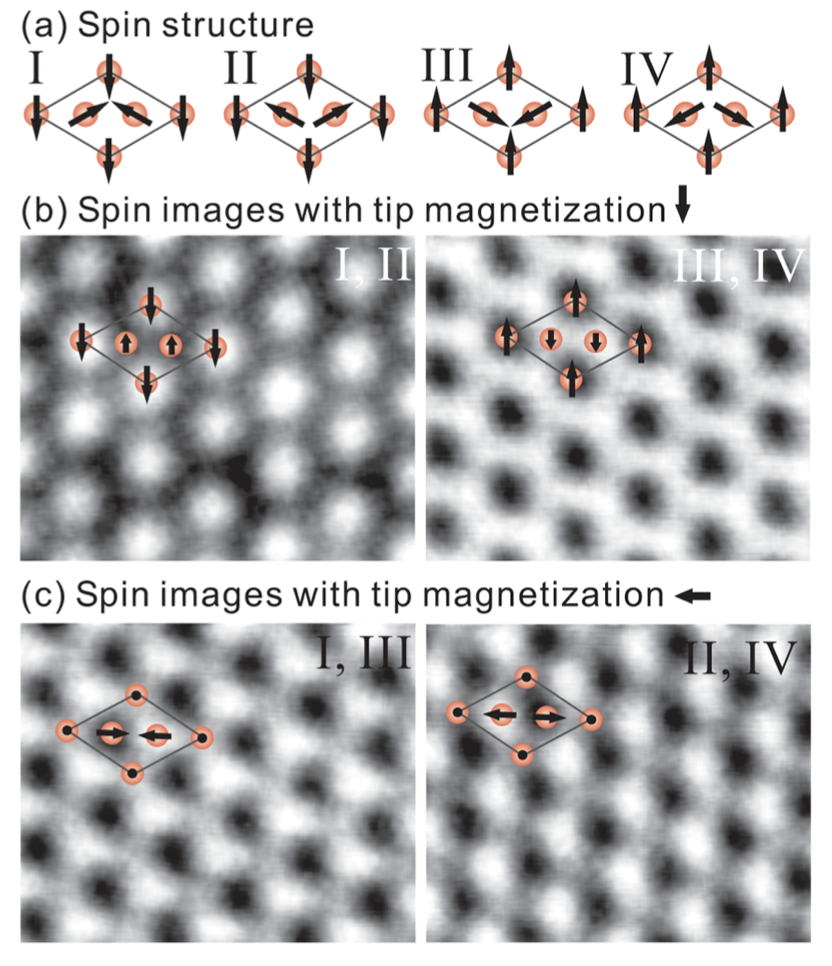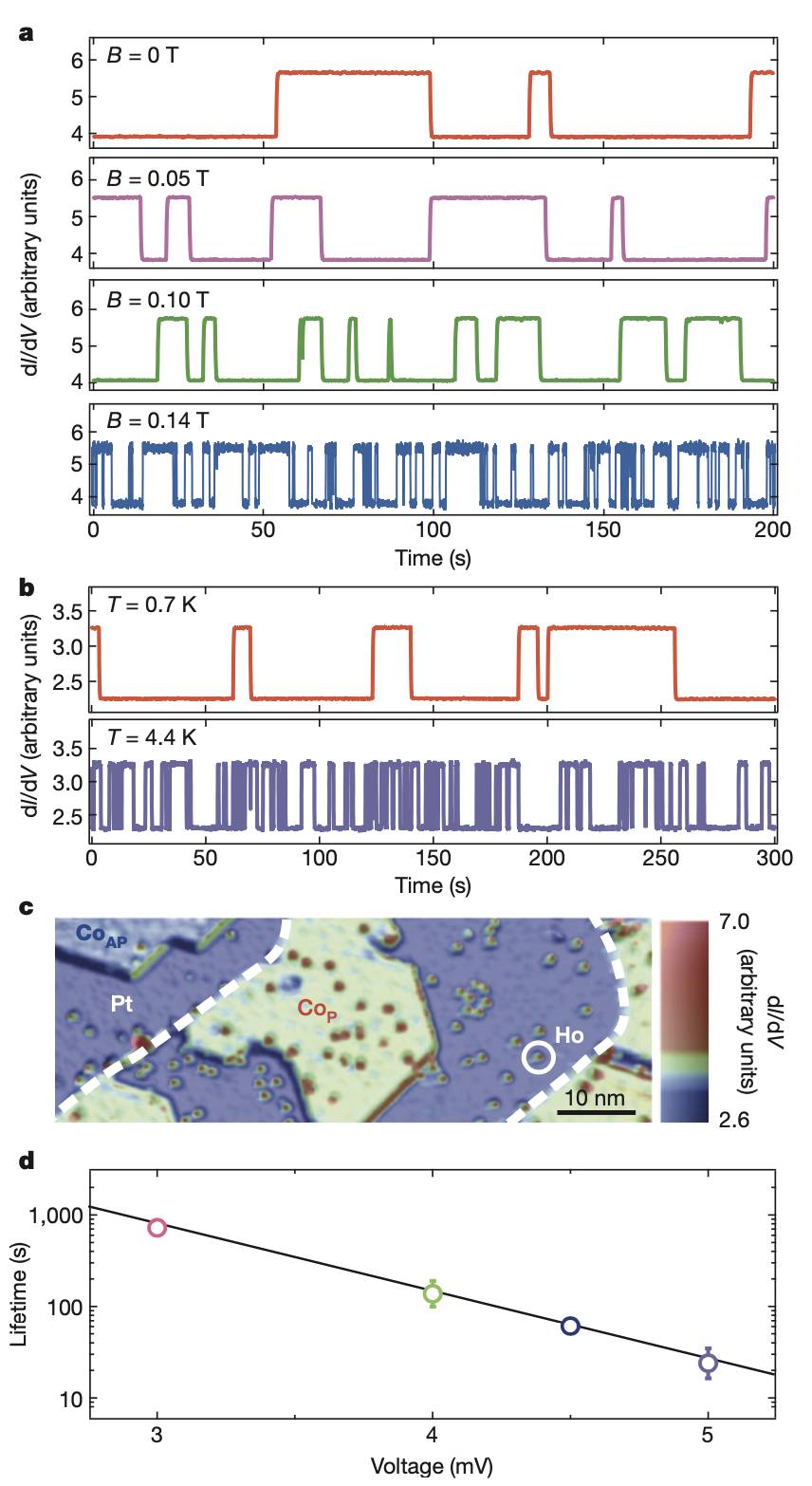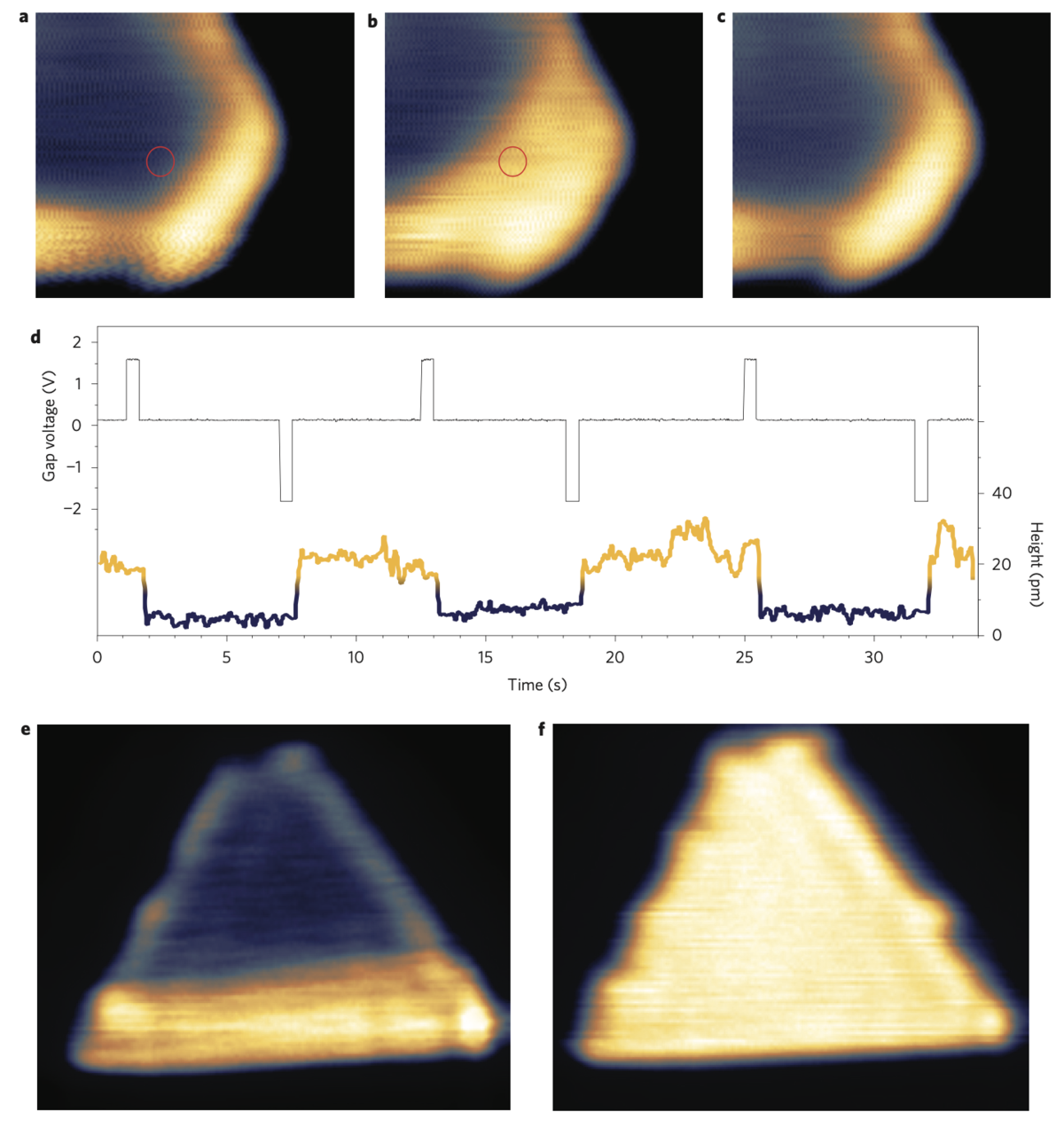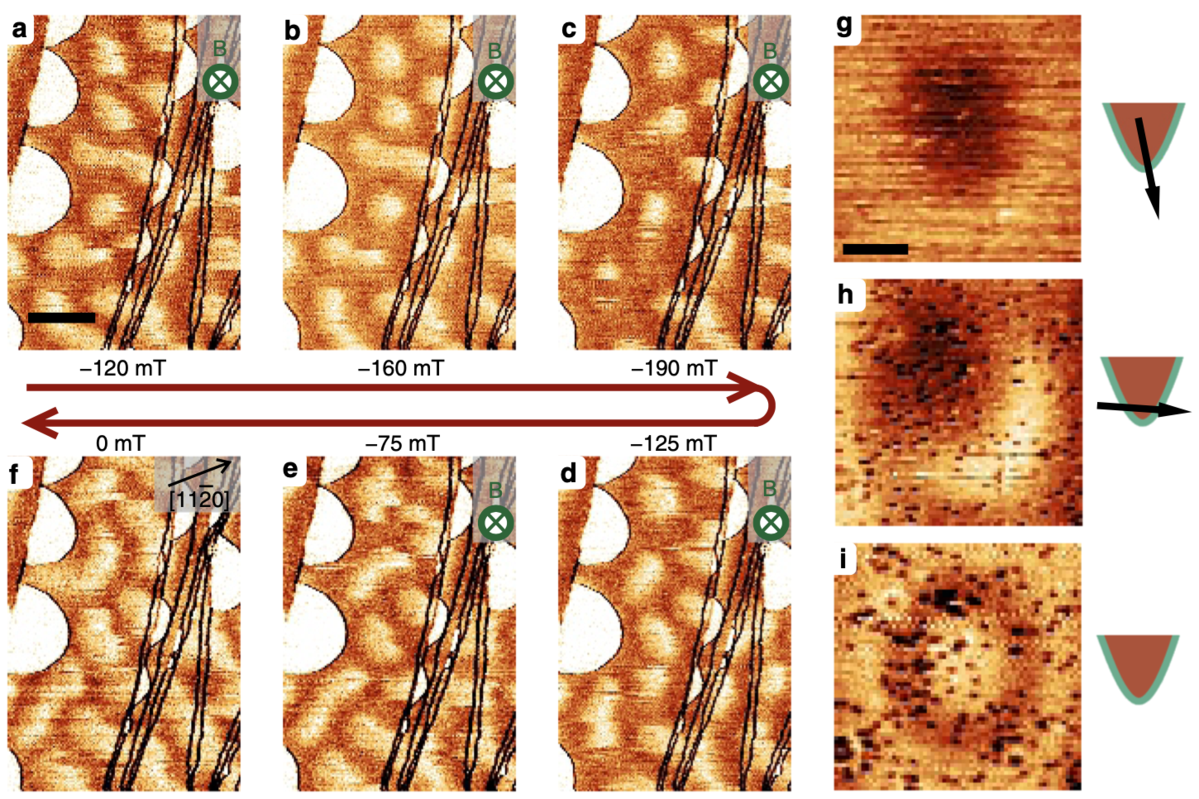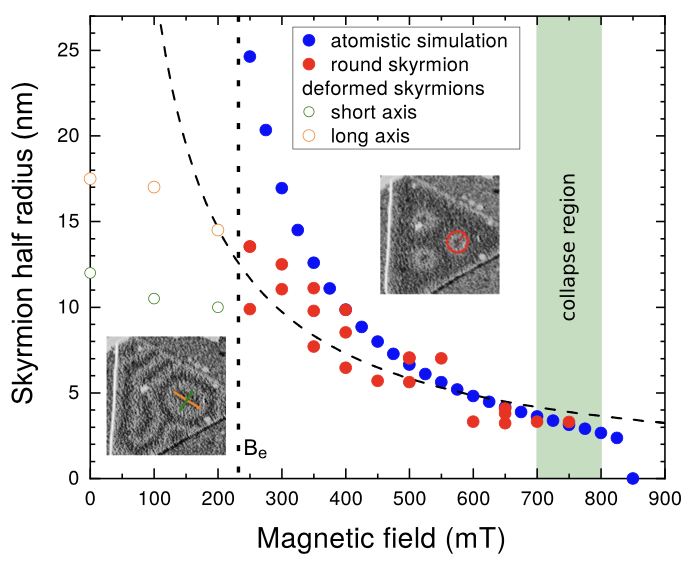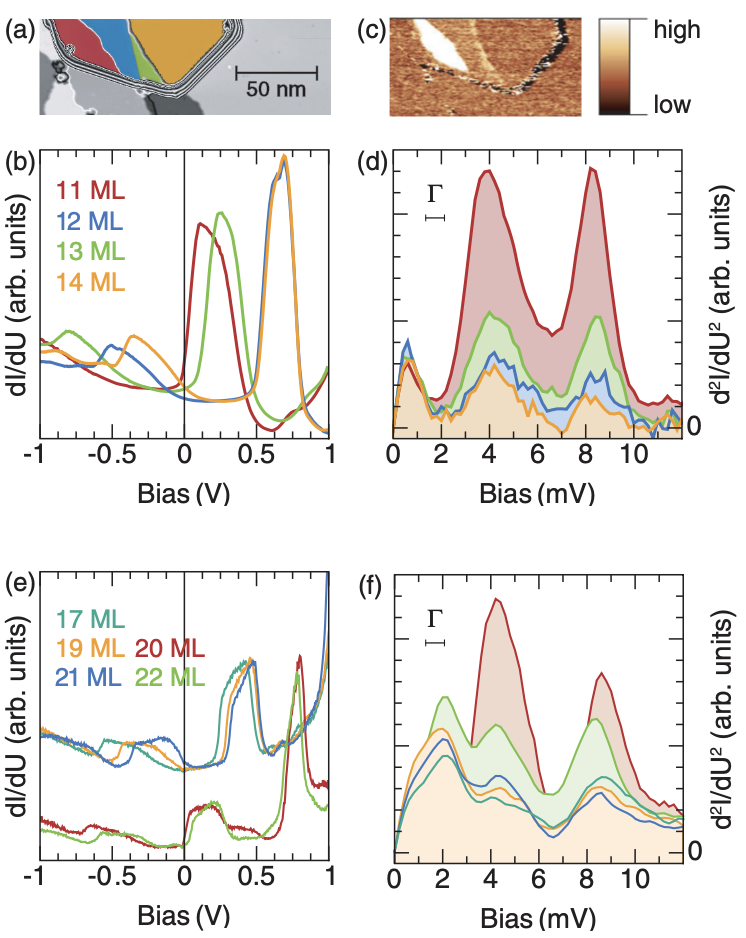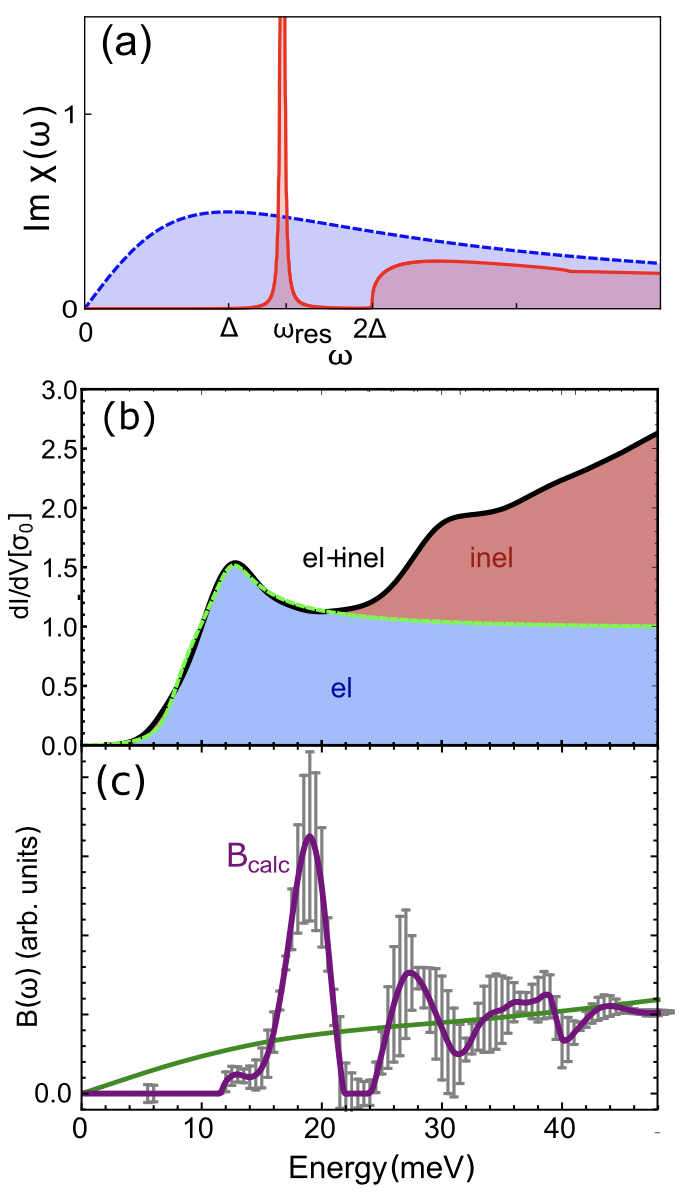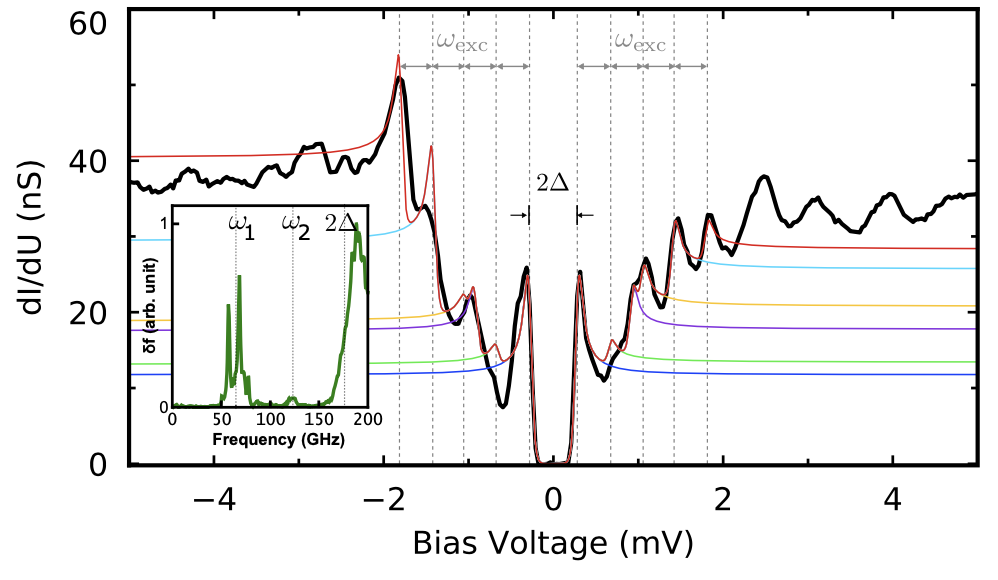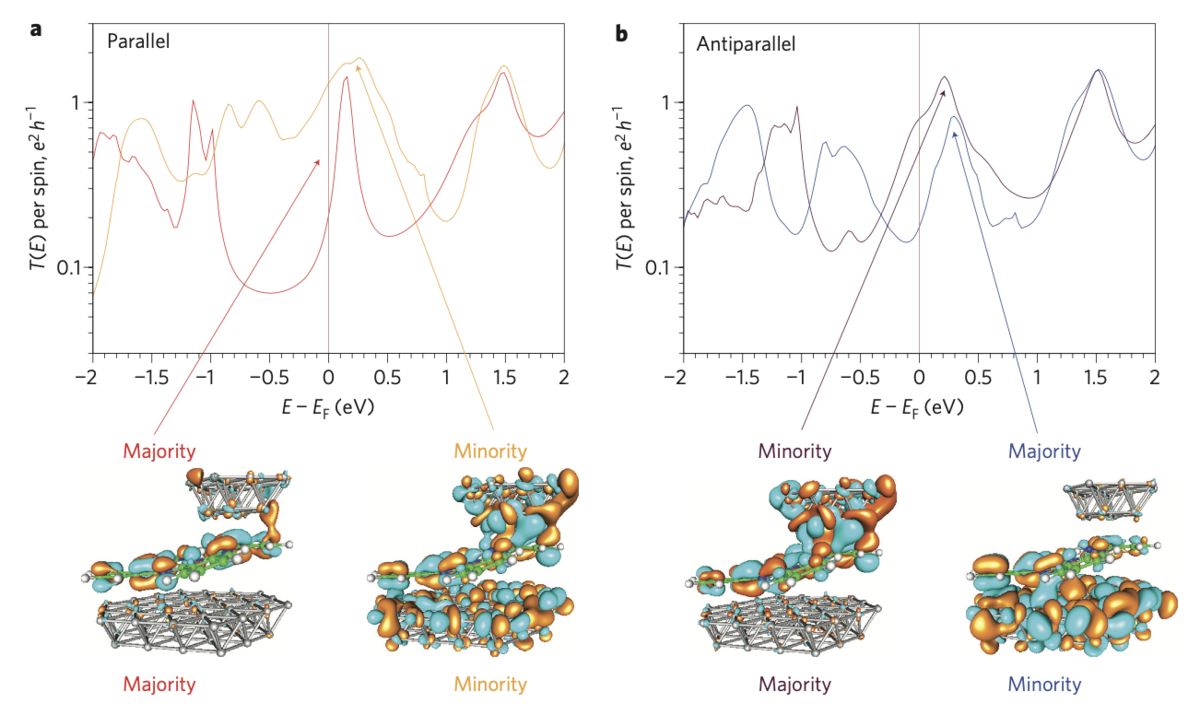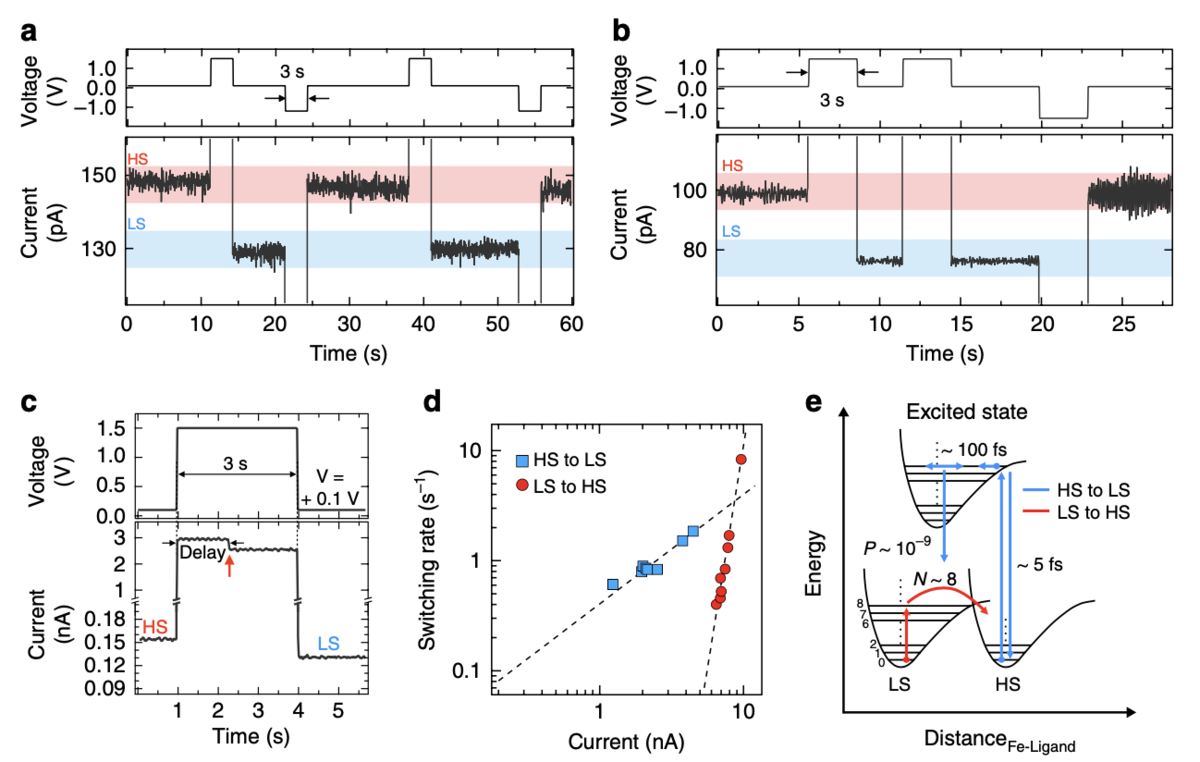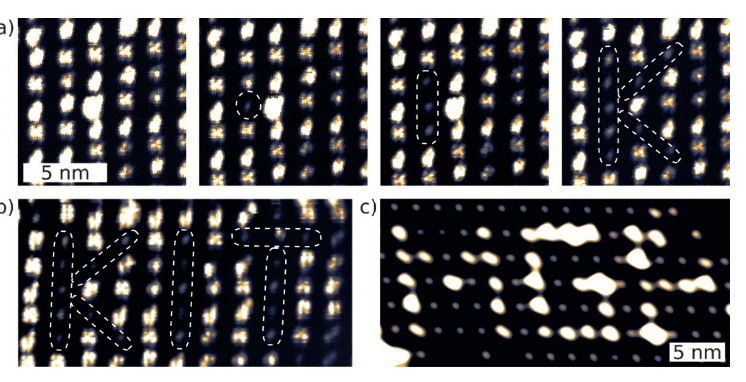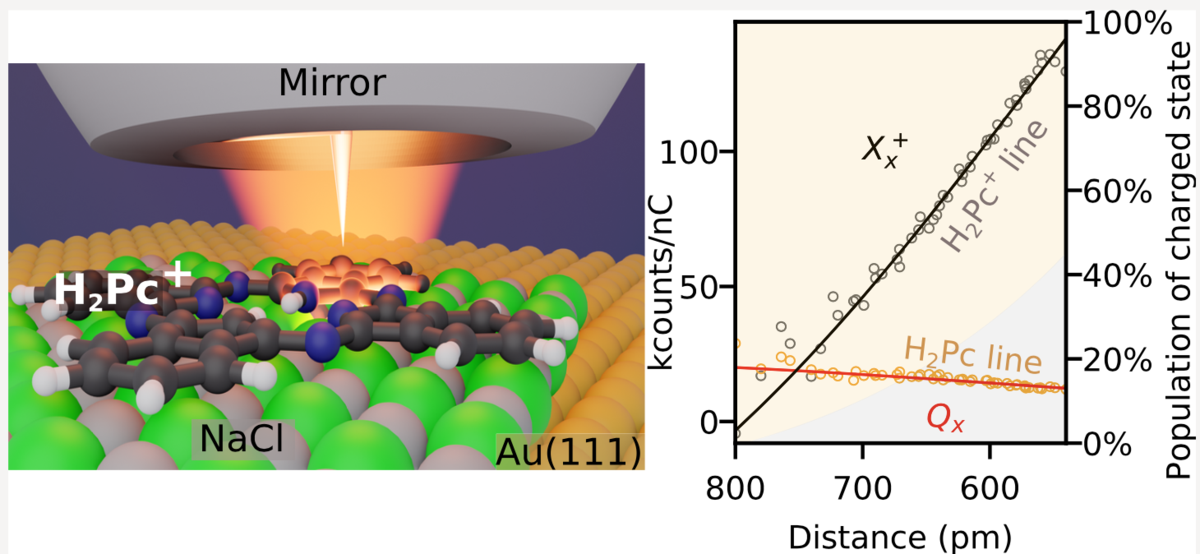sprungmarken_marker_2127
Spins
Using the spin-polarized variant of STM, we can determine the spin structure of nanostructures with atomic resolution. Our studies span the magnetism of thin films down to quantum bits realized by single magnetic impurities.
Spin-polarized STM images of the 120° Néel structure of antiferromagnetic Mn films (see: Revealing the 120° antiferromagnetic Néel structure in real space: One monolayer Mn on Ag(111), C.L. Gao, W. Wulfhekel, and J. Kirschner, Physical Review Letters 101, 267205 (2008))
Time traces of the magnetization of single Ho atoms acting as an atomic spin memory. From the telegraph noise, the lifetimes of the magnetic states can be determined (see: Stabilizing the magnetic moment of single holmium atoms by symmetry, T. Miyamachi, T. Schuh, T. Märkl, C. Bresch, T. Balashov, A. Stöhr, C. Karlewski, S. André, M. Marthaler, M. Hoffmann, M. Geilhufe, S. Ostanin, W. Hergert, I. Mertig, G. Schön, W. Wulfhekel, Nature 503, 242-246 (2013))
Nanoscopic magnetic memory realized in Fe islands on Cu(111). By application of an electric field, the Fe layer can be switched between a ferromagnetic bcc configuration and an antiferromagnetic fcc configuration that show up as different contrast in the STM images (see: Magnetoelectric coupling at metal surfaces, L. Gerhard, T.K. Yamada, T. Balschiv, A.F. Takcs, R.J.H. Wesselink, M. Däne, M. Fechner, S. Ostanin, A. Ernst, I. Mertig, W. Wulfhekel, Nature Nanotechnology 5, 792-797 (2010) and Dynamics of Electrically Driven Martensitic Phase Transition in Fe Nanoislands, L. Gerhard, R.J.H. Wesselink, S. Ostanin, A. Ernst, W. Wulfhekel, Physical Review Letters 111, 167601 (2013))
Recently, we focus on topological spin structures in form of magnetic skyrmions that are induced by the antisymmetric exchange interaction or Dzyaloshinskii–Moriya interaction.
Formation of magnetic skyrmions in Co/Ru(0001) which appear in the STM images as small disks or rings (see: Stabilizing spin spirals and isolated skyrmions at low magnetic field exploiting vanishing magnetic anisotropy, M. Hervé, B. Dupé, R. Lopes, M. Böttcher, M. D. Martins, T. Balashov, L. Gerhard, J. Sinova, W. Wulfhekel, Nature Communications 9, 1015 (2018))
Topologically protected magnetic skyrmions in Co/Ru(0001) as function of magnetic field. By applying a field antiparallel to the magnetization of the core of the skyrmion, it is made to shrink until the barrier of topological protection is overcome at about 750 mT when they collapse and annihilate the topological charge (see: Instability of skyrmions in magnetic fields, L. Mougel, P. M. Buhl, R. Nemoto, T. Balashov, M. Hervé, J. Skolaut, T. K. Yamada, B. Dupé, W. Wulfhekel, Applied Physics Letters 116, 262406 (2020)).
Superconductivity
Superconductivity is a many body effect that arises from a net attractive interactions of electrons mediated by the exchange of a boson. In conventional superconductors the bosonic glue is given by phonons. Inelastic tunneling spectroscopy allows to directly measure the glue function. For nanostructures of lead, we were able to manipulate this glue function in order to enhance pairing of electrons by a factor of around three. For many unconventional superconductors, the origin of the glue is unknown and inelastic tunneling spectroscopy allows for the first time to directly measure the glue function. For example in case of FeSe we could determine the glue function in the normal and superconducting state. In the superconducting state, a clear gap and a resonance mode is established in the glue function speaking for a purely electronic glue function most likely due to virtual magnon exchange.
Measurement of the bosonic glue (Eliashberg function) in lead islands. As function of their atomic thickness the bosonic glue can be modified and largely enhanced at 11 atomic layers (see: Local Measurement of the Eliashberg Function of Pb Islands: Enhancement of Electron-Phonon Coupling by Quantum Well States, M. Schackert, T. Märkl, J. Jandke, M. Hölzer, S. Ostanin, E. K. U. Gross, A. Ernst, W. Wulfhekel, Physical Review Letters 114, 047002 (2015))
Bosonic glue of a single layer of FeSe on SrTiO3. Clearly, a gap is present in the boson spectrum of about 10 meV followed by a spin resonance peak at about 18 meV (see: Tracing the Electronic Pairing Glue in Unconventional Superconductors via Inelastic Scanning Tunneling Spectroscopy, P. Hlobil, J. Jandke, W. Wulfhekel, J. Schmalian, Physical Review Letters 118, 167001 (2017) and Unconventional pairing in single FeSe layers, J. Jandke, F. Yang, P. Hlobil, T. Engelhardt, D. Rau, K. Zakeri, C. Gao, J. Schmalian, W. Wulfhekel, Physical Review B 100, 020503R (2019))
Observation of Higgs excitations in superconducting granular aluminum films showing up as a series of peaks outside the superconducting gap (see: Microscopic charging and in-gap states in superconducting granular aluminum, F. Yang, T. Gozlinski, T. Storbeck, L. Grünhaupt, I. M. Pop, W. Wulfhekel, Physical Review B 102, 104502 (2020))
Molecular electronics
Our efforts deal with the miniaturization of functional, electronic, spintronic and optoelectronic devices to the level of single molecules. The studies include molecular memristors, that store a bit in one molecule and allow electrical read out and writing, molecular switches driven by the electric field in the tunneling junction, molecular motors in which the tunneling current leads to a directed rotation of a functional group or light emission from single molecules in the plasmonic junction of the STM.
Realization of a molecular GMR sensor using single Hydrogen-Phythalocyanin molecules (see: Giant magnetoresistance through a single molecule, S. Schmaus, A. Bagrets, Y. Nahas, T.K. Yamada, A. Bork, M. Bowen, E. Beaurepaire, F. Evers, W. Wulfhekel, Nature Nanotechnology 6, 185-189 (2011))
A molecular spin-crossover molecule can be switched with the help of the STM between a highly conductive high-spin state and a low-conducting low-spin state. Readout and writing happens electrically on the level of single molecules realizing a molecular memristor (see: Robust spin crossover and memristance across a single molecule, T. Miyamachi, M. Gruber, V. Davesne, M. Bowen, S. Boukari, L. Joly, F. Scheurer, G. Rogez, T.K. Yamada, P. Ohresser, E. Beaurepaire, W. Wulfhekel, Nature Communications 3, 938 (2012))
Single molecules in an ordered layer used as a permanent memory stable at room temperature (see: Molecular Graph Paper, M. Lindner, M. Valasek, M. Mayor, T. Frauhammer, W. Wulfhekel, L. Gerhard, Angewandte Chemie, int. Ed. 56, 8290 (2017))
Light collection from a single Hydrogen-Phthalocyanine molecule on a thin NaCl layer. The light emission is boosted by a factor of 20 in case we charge the molecule (see: Boosting Light Emission from Single Hydrogen Phthalocyanine Molecules by Charging, V. Rai, L. Gerhard, Q. Sun, C. Holzer, T. Repän, M. Krstic, L. Yang, M. Wegener, C. Rockstuhl, W. Wulfhekel, Nano Letters 20, 7600-7605 (2020) )


